March 12 - 18, 2017: Issue 304
Flames And Fear
A Hands-On Account Of The Carwoola Fires
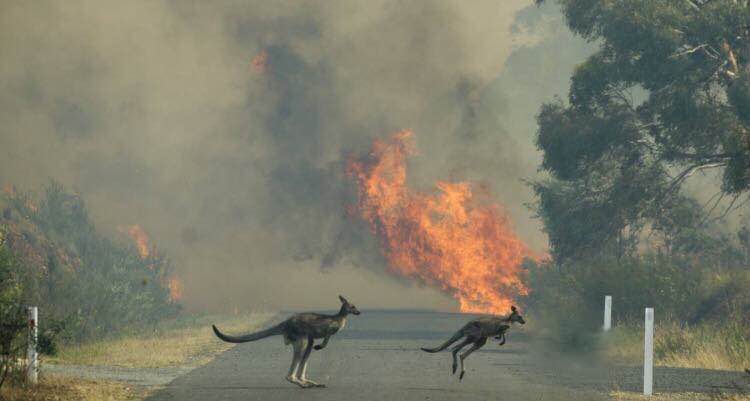
Photo by Southern Sons Rural Contractors
Flames and Fear
A hands-on account of the Carwoola Fires
Being part of the First Response Team was tough. We were the ones combing the blackened wasteland for signs of life. We were seeing first-hand the devastation that fire wreaks on the slow, the weak and the panicked creatures. Burnt-out turtle shells, melted reptiles and charred mammals. Creeks devoid of water and river-banks burnt as black as tar. A sooty face appeared from a hole in the river-bank. A water-dragon. A water-dragon with no water. We heard a thundering noise. A wallaby bounced away in distress, trying to scramble up the ashen river-banks. We noticed that he was favouring one foot and was struggling to get purchase on the rocks. Definitely a candidate for being darted and brought into care.
Our aim was to go out and look for kangaroos and wallabies that were struggling with burns, dart them and bring them in for treatment. We were in small teams of 3 - one darter, and two helpers for shepherding the injured ones from the mob, for carrying sedated kangaroos and for administering first aid. It was instantly apparent that there was no shortage of critters needing treatment.
During the fires, the kangaroo mobs had fled to escape the conflagration but once the fires had died down, they headed back to their usual feeding areas - not realising that the earth was still red-hot. Once they hopped onto the scorching coals, they kept hopping forward in terror and burnt the pads of their feet and the bottom of their tails. These were the victims we were tracking. The joeys fared the worst. With sore feet, they were unable to keep up with their mobs and were straggling - becoming vulnerable to predators.
We darted so many mums with at-heel or at-foot joeys, making sure the mums and their joeys were kept together when transporting them to carers. Once we’d darted them, they were given first aid for the burns and transported to Wildcare's macropod coordinator, Helen, to be triaged and have treatment plans implemented. Helen then assisted in deciding which carers were best suited to care for each animal and she had to decipher which of the animals would be taken for veterinary intervention. Some of the local veterinarians helped to treat the victims.
Dr Howard Ralph of Southern Cross Wildlife Care bore the brunt of the work. He and his team worked every morning until 3am trying to relieve the suffering of the injured and burnt wildlife. There were so many patients! Kangaroos, wallabies, echidnas, possums, reptiles, wombats. They were all given pain relief, plenty of fluids, antibiotics and specific dressings for their burns. Many had to be anaesthetised so that their burns could be properly debrided and dressed. As a charity organisation run purely by volunteers, their costs have escalated enormously as a result of the influx of burn victims. If you admire their work and have a dollar or two to spare, it will be put to exceptionally good use www.southerncrosswildlifecare.org.au
As a member of Sydney Wildlife here on the Northern Beaches, I was honoured to go down to the fire-zone and work alongside members of Wildcare that are nothing short of heroes. These are people whose homes are already overflowing with rescued wildlife and orphaned joeys; people who have jobs and kids and still manage to fit in countless joey feeds and dressing changes; people who willingly put themselves in personal peril by entering the fire-zone and engaging with frightened animals - for one purpose only: to mitigate their suffering. These rescuers don’t have television crews following them. They don’t have publicists crowing about their amazing feats. They don’t earn money for putting their lives on the line. But I would like to bear witness to their dedication, passion and selflessness. These are the people I want my kids to become.
I was only able to assist for 3 days down in Carwoola and then I had to come back to Sydney. I thought that experiencing the fire-zone was the worst feeling.
I was wrong.
Driving away, knowing that there were so many more animals needing my help was by far the worst feeling…
Long after the fires have abated and the camera crews have left, the wildlife will continue to suffer.
By Lynleigh Greig
Sydney Wildlife
Sydney Wildlife
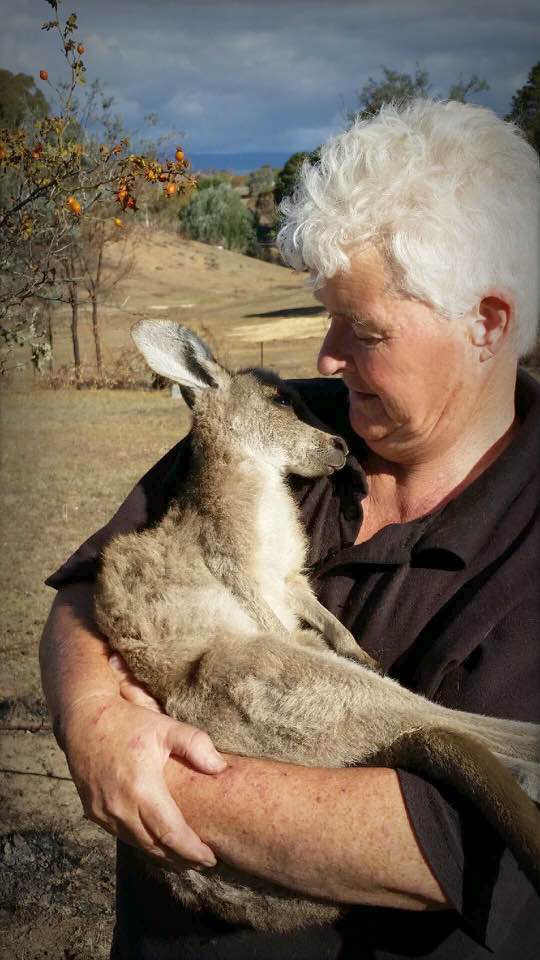
Cindi - one of Wildcare’s brilliant dart-gun operators and wildlife rescuers.
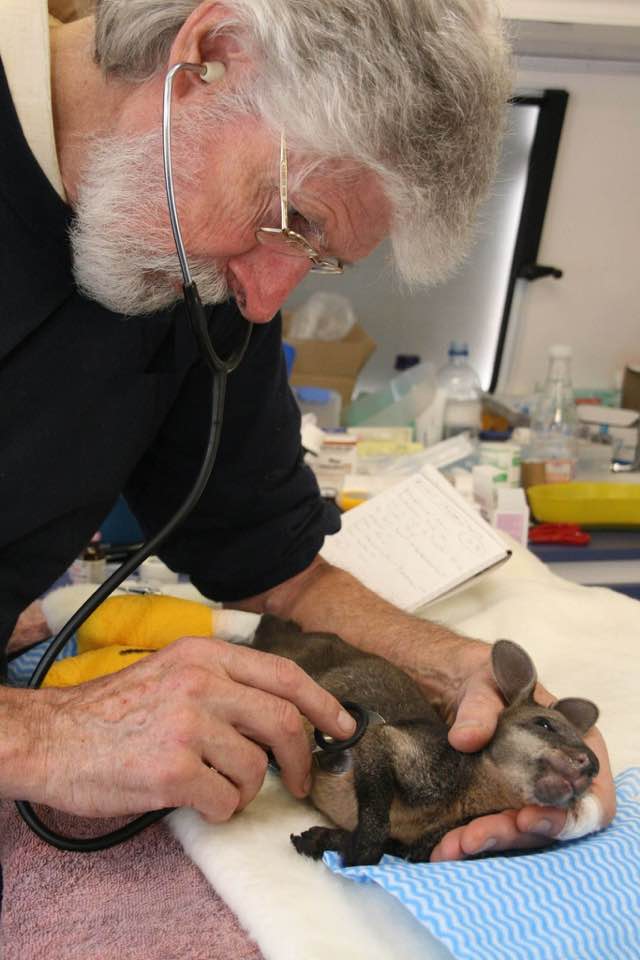
Dr Howard Ralph of Southern Cross Wildlife Care - a living legend and a man of exceptional moral fortitude.
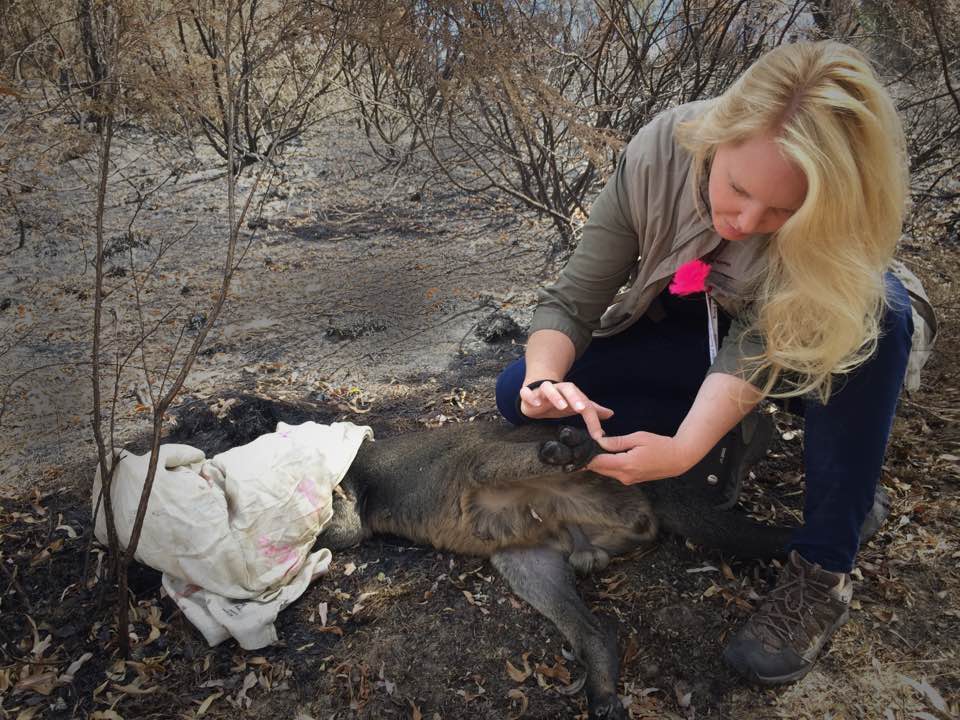
Me assessing the burnt feet of a wallaby that I’d just darted.
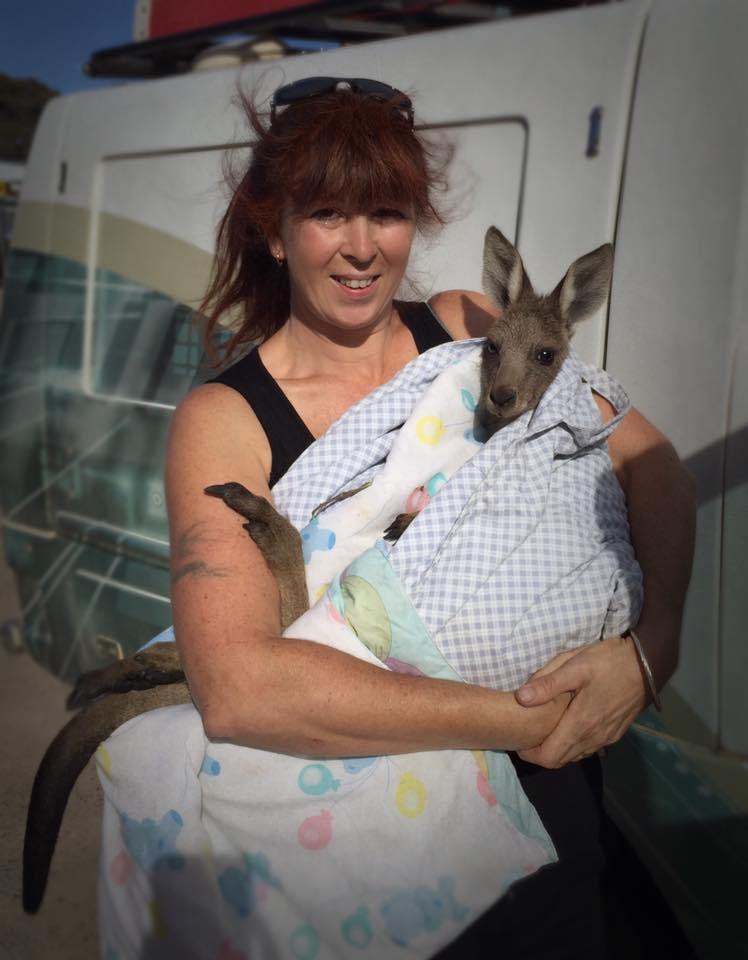
Helen - Wildcare’s amazing macropod coordinator and wildlife carer.
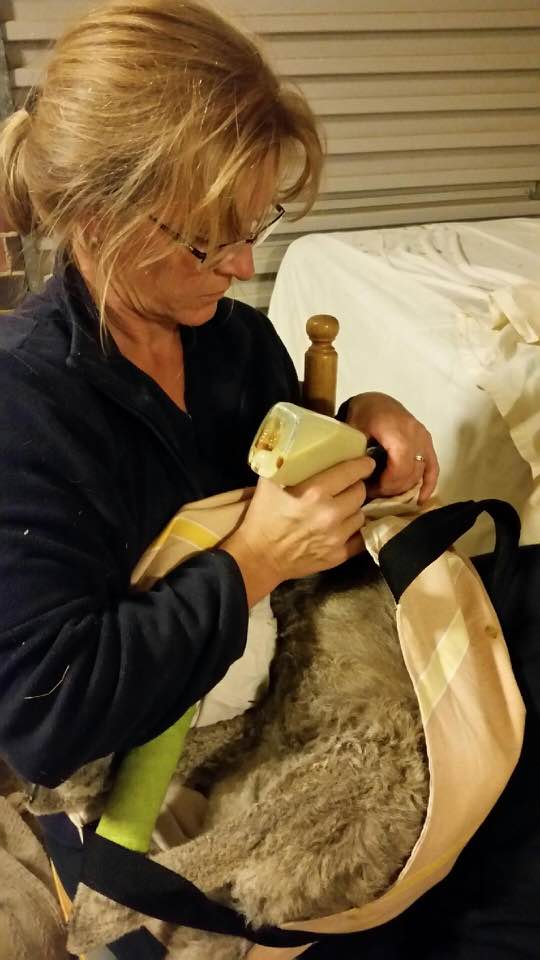
Liesl - one of Wildcare’s busiest carers and a beautiful lady.
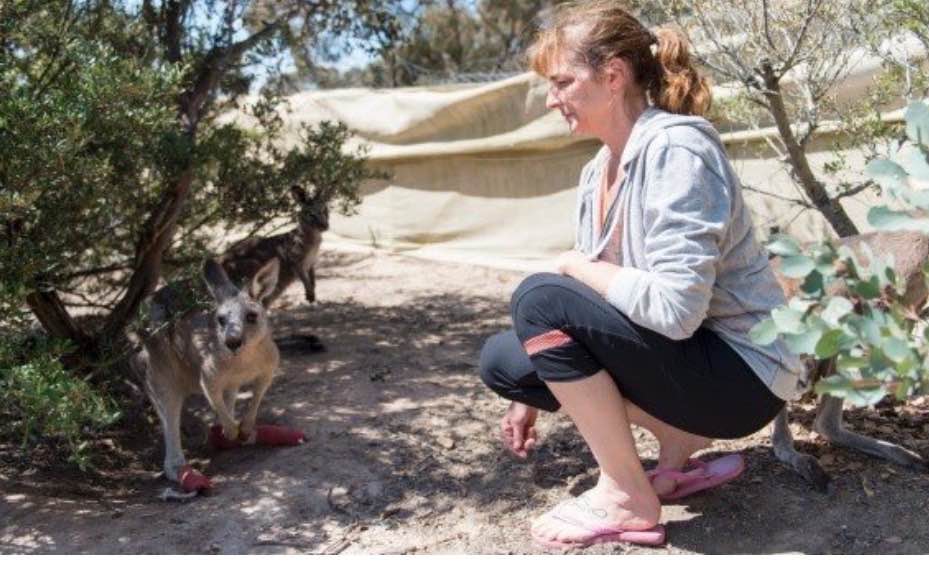
Wildcare’s lovely Sherri with 2 of her charges. Photo supplied.
Southern Cross Wildlife Care and Wildcare rely on the generosity of its volunteers and donations from members of the public. Donations can be made via the Southern Cross Wildlife Care and Wildcare websites: there a number of ways to donate and its tax deductible!
Wildcare Queanbeyan
Donations can be made by direct credit to:
Commonwealth Bank
Account name: Wildcare Queanbeyan Inc
BSB: 062-593
Account number: 10216803
Reference Surname and “Fire”
Or via PayPal to treasurer@wildcare.com.au
Southern Cross Wildlife Care
Bank Transfer
Commonwealth Bank
BSB 062205
Account No. 10237440 (Mona Vale)
Cheque
donate by cheque to:
Southern Cross Wildlife Care
14 Crescent Rd
Mona Vale, NSW, 2103
For our Queanbeyan readers - Please Contact Wildcare on 6299 1966 if you see a native animal in distress or need advice as to how you can support wildlife in your area. Wildcare Queanbeyan Facebook Page
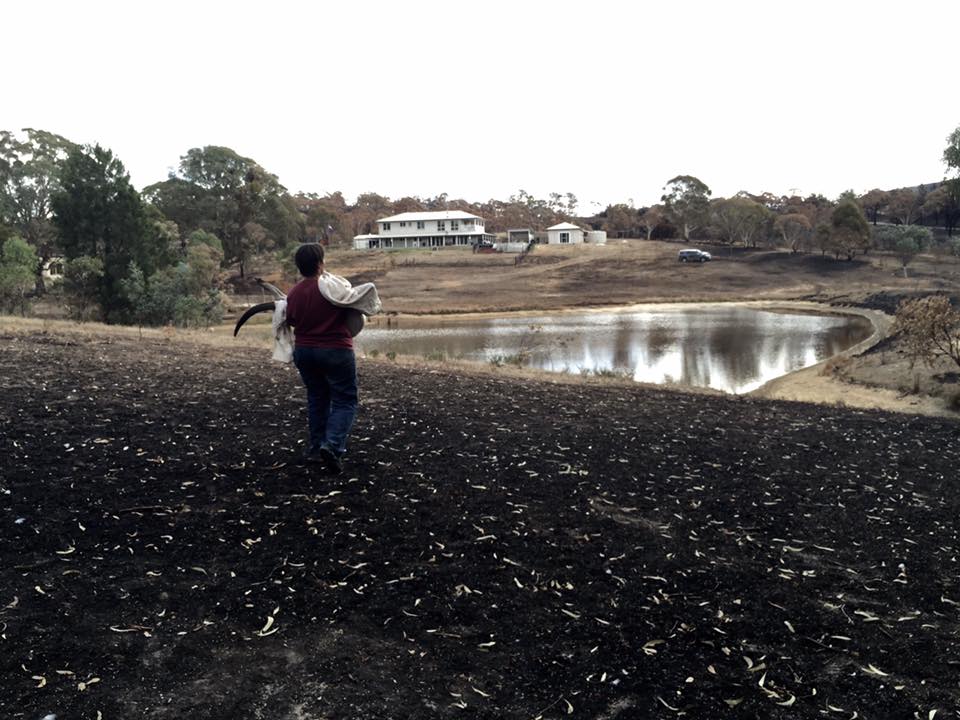
Di carrying a darted kangaroo across the dam wall. Di is one of Wildcare’s extraordinary rescuers/superheroes.